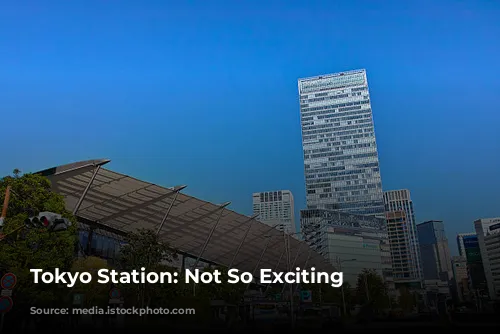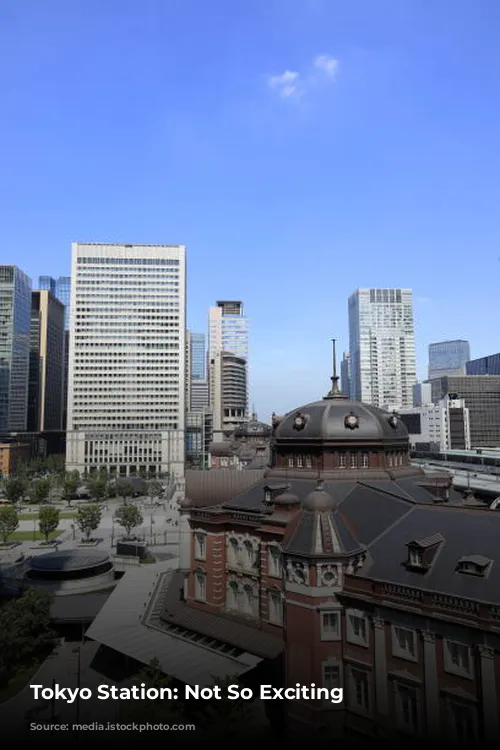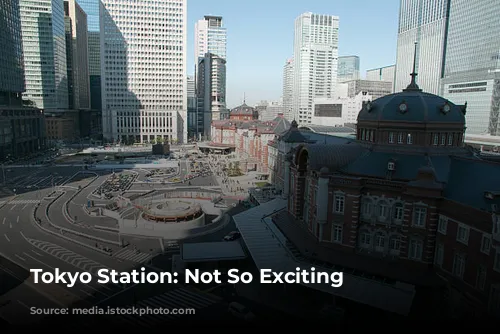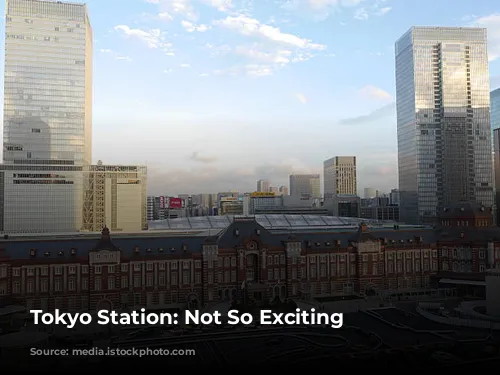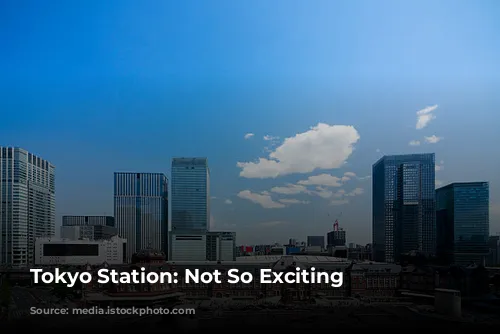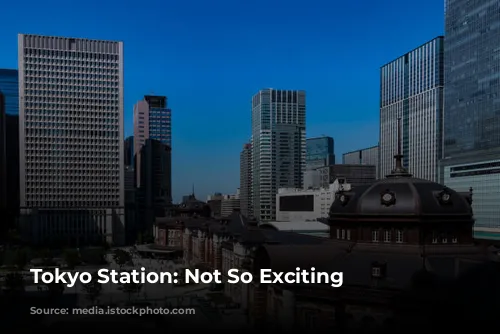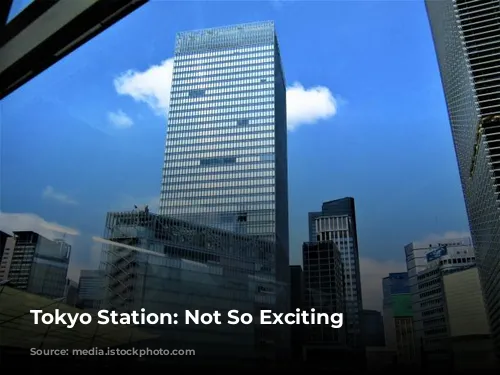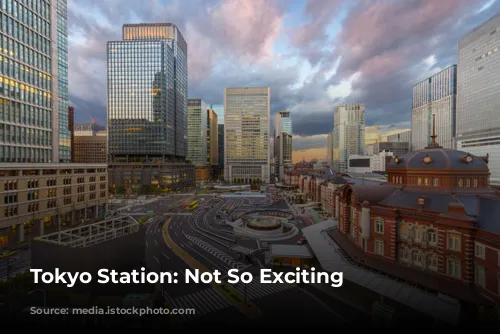Tokyo Station, while grand and iconic, isn’t the most thrilling area to stay in. While it does offer some shopping centers, the atmosphere is more geared towards business travelers and lacks that vibrant energy you might expect from a bustling metropolis like Tokyo. If you’re seeking a lively, exciting atmosphere, Tokyo Station might not be the best choice for you.
However, if you want to be close to the heart of the city, Tokyo Station offers a convenient base to explore other nearby attractions like the Imperial Palace. You could spend a day or two in the area, enjoying the hotel and exploring the palace, but for longer stays, the area might feel a bit monotonous.
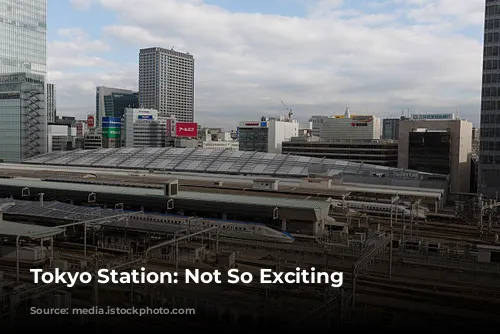
Shibuya: A Shopper’s Paradise
If shopping is your top priority, Shibuya is the place to be. The area is a haven for shoppers with a plethora of stores, boutiques, and shopping malls, catering to every taste and budget.
Staying at the Dormy Inn Premium in Shibuya is a great option, offering value for money and a pleasant experience, with a relaxing public bath. The hotel even provides a chance to glimpse the nearby graveyard, adding a touch of the unexpected to your stay.
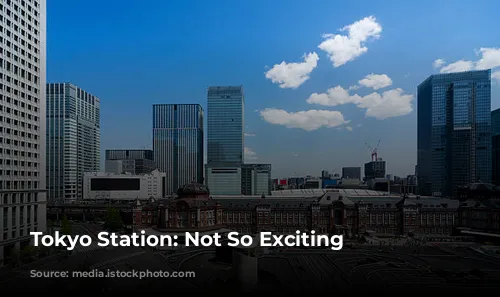
Shinagawa: A Blend of Shopping and Chinese Tourists
Shinagawa, another area with shopping options, leans more towards Chinese tourists, making it a less ideal choice for western travelers seeking a more authentic Japanese experience. While the Prince Hotel offers a comfortable stay, its English-speaking services are limited, making it less appealing for those who prefer a more international ambiance.
If you find yourself arriving late and departing early, Shinagawa could be a suitable choice, but for longer stays, you might want to explore other options.
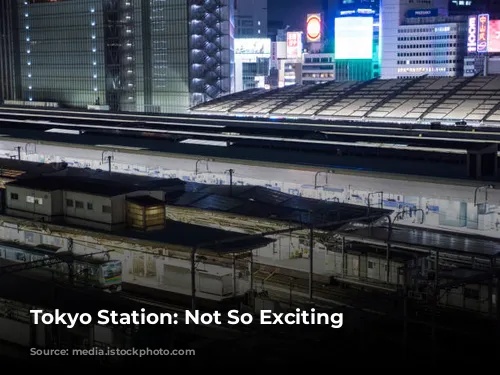
Shopping Malls: Thinking Beyond the Obvious
The discussion of “shopping malls” in Tokyo often leads to misunderstandings. Tokyo Station’s underground shopping area is vast, but it’s not a stand-alone mall like those found in the suburbs.
When it comes to accessibility, Shinkansen (bullet train) access is readily available from numerous stations on the Yamanote Line. The key is to choose a hotel close to any station on this line, as most offer a quick and convenient commute to the Shinkansen within 10-15 minutes.
Don’t let the Shinkansen access become the sole factor dictating your hotel choice. Consider your overall itinerary and the time you plan to spend in Tokyo. Three days in Tokyo should guide your decision, not just one trip to catch a Shinkansen train.

Higashi Ginza: A Hidden Gem
Higashi Ginza offers a fantastic alternative to the more tourist-heavy areas. Located a short walk from Tokyo Station and easily accessible to other central neighborhoods, it’s a great location for exploring the city. While a fifteen-minute walk with luggage might not be ideal, it’s a pleasant stroll otherwise. If you need to transport luggage, a short taxi ride from Tokyo Station solves the issue.
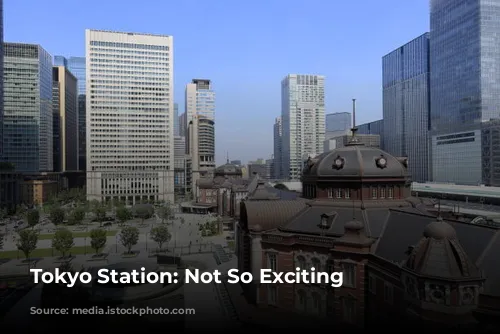
Ginza: A Blend of Luxury and Everyday Shopping
Ginza, known for its upscale boutiques and department stores, also boasts a surprising array of practical shopping options. From the iconic Muji flagship store to the Loft flagship store and the Itoya stationery store, Ginza offers a unique blend of high-end and everyday shopping.
The recently opened supermarket in Maronnier Gate Building 2 stands out as one of the best supermarkets in central Tokyo, offering a wide range of fresh and quality groceries. The area is also teeming with restaurants, ranging from budget-friendly eateries to fine dining establishments. Staying in Ginza gives you the advantage of being immersed in the heart of the city’s vibrant shopping and dining scene.
Ginza Six, a modern shopping complex, boasts a rooftop garden that offers a pleasant space for relaxation and enjoyment of food and beverages purchased from the department store basement, a rare find in central Tokyo.
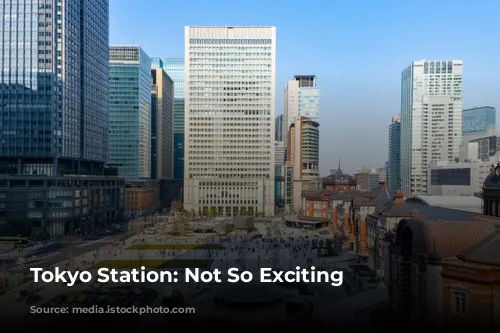
Hotel Nihonbashi Saibo: A Traditional Charm
Hotel Nihonbashi Saibo, located in the Ningyocho neighborhood, provides a different perspective on Tokyo. While it doesn’t offer direct access to the Shinkansen, there are direct trains to Shinagawa Station. Reaching Tokyo Station requires a train change, but the commute remains manageable.
The area surrounding the hotel offers a quaint and traditional charm, with numerous spots to indulge in old-fashioned dining experiences. While the area isn’t known for fashion boutiques, it offers a glimpse into a more authentic side of Tokyo, accessible through the extensive commuter train network.
